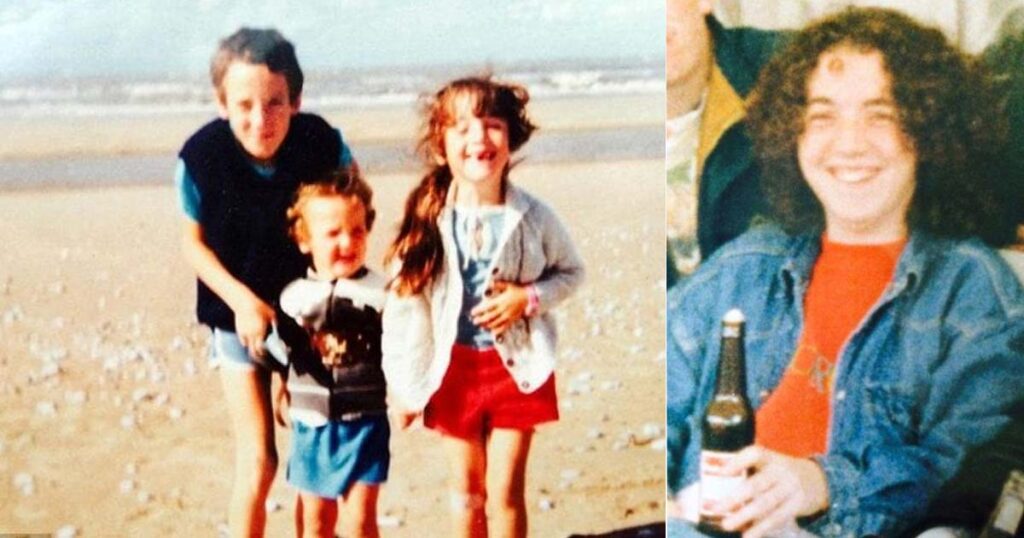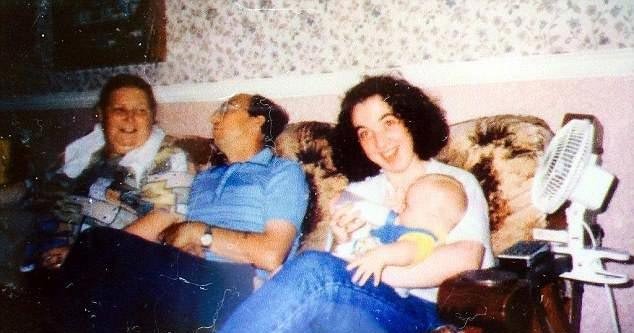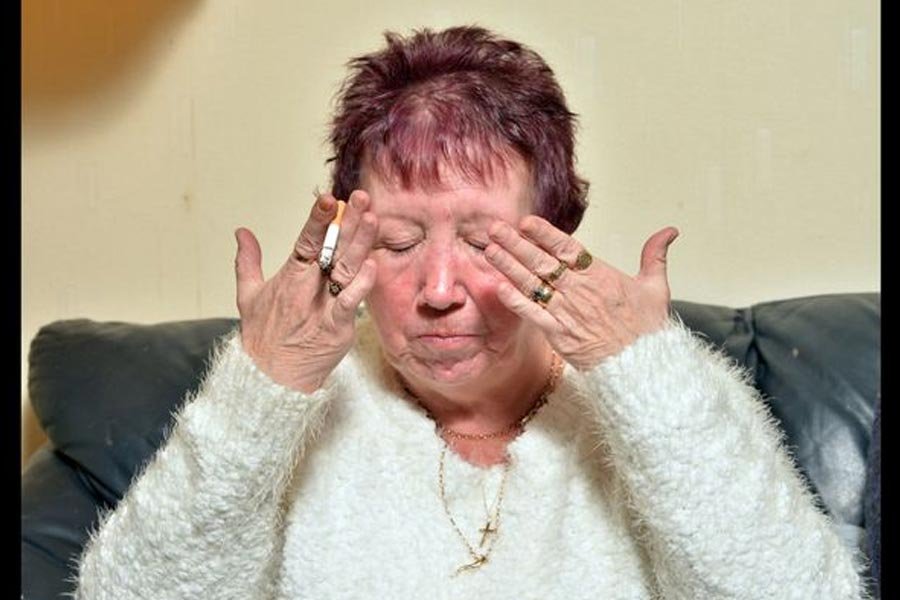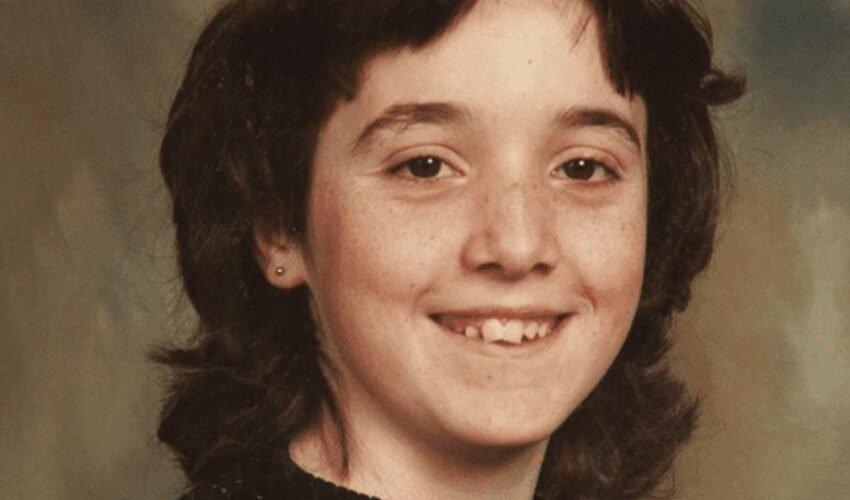In the quiet town of Manchester, England, a sinister tale of abuse and murder unfolded that would shock the nation. Kelly Anne Bates, a young girl barely out of school, found herself ensnared in a web of manipulation and violence that would ultimately lead to her tragic demise. This is the chilling story of a 17-year-old English teenager and her abuser, James Patterson Smith.

At the tender age of 14, Kelly’s path crossed with Smith’s while babysitting for friends. Little did she know that this encounter would set the stage for a nightmare that would haunt her family and the community for years to come. Smith, a man significantly older than Kelly, began grooming her, winning her trust and manipulating her emotions with calculated precision.
On November 30, 1995, after leaving school, Kelly moved in with Smith at his home in Furnival Road, Gorton, Manchester. She managed to conceal the significant age difference between them from her parents, further isolating herself and becoming more dependent on Smith’s control.
A Mother’s Intuition – parents never agreed to the relationship
Kelly’s mother, Margaret, was taken aback when she learned of Smith’s age, which was twice that of her daughter. She noticed something off about him right away; he didn’t look like a 32-year-old man at first, and he seemed to be much older. Margaret’s investigations revealed that Smith was, in fact, 49 years old, 33 years older than Kelly. Despite her concerns, Margaret was powerless to intervene as Kelly was legally an adult in Britain.

Margaret’s words would later haunt her: “This wasn’t the man I wanted for my daughter. I vividly recall seeing our bread knife in the kitchen and wanting to pick it up and stab him in the back.”
Little did she know that her instincts were spot on, and her decision not to act on that impulse would have devastating consequences.
The Cycle of Abuse Begins
During their relationship, Kelly and Smith had a brief break-up, but Smith stalked her until they were back together again. While visits to Smith’s house were common for Kelly, her parents once followed her there. To their surprise, Smith invited them inside and showed them a hole in the floorboards, claiming it had been made by engineers repairing a gas leak. Kelly’s parents would later believe that this was the place where he held their daughter captive.
Margaret and Kelly’s father agreed to let her move in with Smith because she kept in regular contact and visited them frequently. However, soon after she moved out, her visits became rare, and when she did stop by, her parents noticed bruises on her arms – a telltale sign of the abuse she was enduring.

The Descent into Darkness
Kelly soon stopped seeing anyone, as she was afraid that her parents would discover the extent of her injuries. Smith even went so far as to send Kelly’s family letters posing as her, further isolating her from her loved ones.
On March 10, 1996, Margaret called Kelly to inform her that she had missed a dentist appointment. That would be the last time they spoke to each other. Kelly promised she would come home to visit the family on Mother’s Day the following Sunday, but she never did.
Instead, Margaret received a card from Kelly, but the handwriting was not her daughter’s. At Kelly’s father’s birthday and her parents’ wedding anniversary, they witnessed the same discrepancy. They knew something was terribly wrong, but Kelly Anne Bates was murdered before they could intervene.
The Discovery of a Nightmare
On April 16, 1996, James Patterson Smith contacted Greater Manchester Police to report that his teenage girlfriend, Kelly Anne Bates, had accidentally drowned in the bathtub. However, the authorities quickly arrested Smith as his story fell apart almost immediately.
The post-mortem examination revealed a horrifying truth: Smith had brutally tortured Kelly Anne Bates for weeks before she finally died. The police found Kelly Anne’s naked and lifeless body on the bathroom floor, a chilling testament to the horrific abuse she had endured.
The Tortured Life of Kelly Anne Bates
The details of Kelly’s torture were nothing short of gut-wrenching. Over a period of four weeks, Smith inflicted a series of brutal injuries on the young woman. She suffered scalding of her buttocks and legs, stab wounds inside her mouth, and mutilation of her body. In one of the most shocking instances of abuse, her eyes were gouged from their sockets up to three weeks before her death. Smith also attempted to drown her by holding her head underwater in the kitchen sink. Kelly’s broken arm and shattered kneecaps were further evidence of the extent of the abuse she endured.
The severity and extent of her injuries were so severe that they shocked even experienced police officers and medical professionals. The pathologist who examined her body found more than 150 injuries inflicted over a period of at least a month. In his career, he had examined nearly 600 victims of homicide but had never come across injuries as extensive as Kelly’s.
The Abuser: James Patterson Smith
Smith was an abusive man who thrived on control and domination over his partners. He had a long history of violence towards women, including a previous partner whom he had also abused. His violent tendencies escalated with each relationship, ultimately leading to the horrific murder of Kelly Anne Bates.

As for Margret, she wishes, “I want him to die just like Kelly did. I know I shouldn’t say this, but I wish I’d killed him the first time I saw him. That way Kelly would still be alive.”
During the trial, other women Smith had abused came forward, painting a picture of a misogynistic man who was obsessively jealous and turned to violence to control others. Smith even tried to drown a 15-year-old girlfriend in a previous relationship, foreshadowing the fate that awaited Kelly.
The Trial and Conviction
At the trial, prosecutors laid out the torture Bates had endured for the jury. “The physical pain would have been intense,” one prosecutor said, “causing anguish and torment to the point of mental breakdown and collapse.”
Smith, however, argued that he was the real victim, claiming that Kelly “would put me through hell winding me up.” He even alleged that she inflicted some of her injuries herself to make him look bad.
But the jury saw through his lies and quickly found 49-year-old James Patterson Smith guilty of murdering Kelly Anne Bates. On November 19, 1997, he was sentenced to life imprisonment with a minimum of 20 years in prison, where he remains to this day.
A Mother’s Regret
As for Margaret Bates, she is still haunted by the memory of that fateful day when she first met Smith. “It was a bizarre thought,” she said of her desire to kill him right there, “I would never normally think of anything so violent, and now I wonder whether it was some sort of sixth sense.”
Margaret’s regret is palpable, and her wishes for Smith are a testament to the depth of her grief and anger. “I want him to die just like Kelly did. I know I shouldn’t say this, but I wish I’d killed him the first time I saw him. That way, Kelly would still be alive.”
The Legacy of Kelly Anne Bates
Kelly’s tragic story serves as a stark warning about the dangers of abusive relationships and the importance of early intervention. It highlights the need for society to be vigilant and proactive in recognizing and addressing signs of grooming and domestic abuse. It also underscores the importance of providing support and resources to victims of domestic violence, to help them escape their abusive situations and seek justice.
In the wake of her death, Kelly’s family, friends, and the wider community have sought to keep her memory alive and ensure that her tragic death was not in vain. They have worked tirelessly to raise awareness about domestic violence and advocate for stronger protections for victims. Through their efforts, they hope to prevent other young women from suffering the same fate as Kelly.
While the details of her torture and murder are difficult to stomach, they serve as a sobering reminder of the depths of human cruelty and the urgent need to address the issue of domestic violence head-on. Through education, awareness campaigns, and the establishment of robust support systems, we can empower individuals to recognize the signs of abuse and provide them with the resources they need to escape dangerous situations.
Read more from the website:











